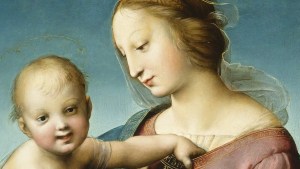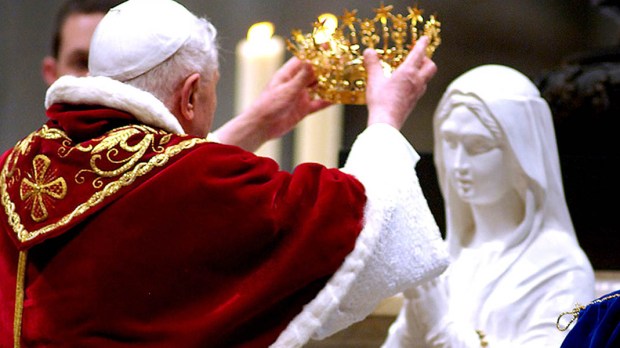When Meghan Markle walked down the aisle for the royal wedding, she was adorned with a diamond tiara lent to her by Queen Elizabeth, having been made in 1932 for Queen Mary, Elizabeth’s mother. This is but one recent example of the connection between crowns and royalty, something adopted by countless cultures dating back millennia.
Our current understanding of royalty has been largely fashioned by the development of medieval Europe, but the significance of the crown is much more ancient. The oldest known extant crown in the world was rediscovered near the Dead Sea in 1961, and dates back 6,000 years to the Copper Age.
The crown as a symbol of royalty has not only secular, but also religious importance. We recognize Jesus as King, and have a very well developed tradition of Mary as Queen.
The Scriptures emphasize a number of times that Jesus descended from the line of David. In the Davidic Kingdom of the Old Testament, the most powerful woman in the land was not the wife of the king, but rather his mother, therefore referred to as the “queen mother.” In view of this Davidic tradition, it follows that if Jesus is Lord of the universe, then Mary, a virgin of humble origins, is the queen mother, and the most powerful woman of all.
The earliest mention of Mary wearing a crown comes from the “woman of the Apocalypse” in Revelation: “A great sign appeared in the sky, a woman adorned with the sun, with the moon under her feet, and on her head a crown of twelve stars” (Rev 12:1).

Read more:
Who was that huge red dragon that brought our little boys to attention at the Assumption Mass?
The Church identifies the woman of this passage as the Blessed Mother, and a great many images of Mary throughout the centuries have therefore depicted her with a crown of stars. In Scripture, the number twelve was usually used in reference to either the twelve apostles, or the twelve tribes of Israel. The twelve stars thus indicate that Mary is queen over the entire people of God.
Use of the term queen as one of Mary’s formal titles developed over time in the Church, from St. Ephrem using the title in the 300s to the custom of meditating on the crowning of Mary as part of the Rosary beginning in medieval times, the multiple titles of queenship granted to Our Lady in the Litany of Loreto in 1587, and more recently, the addition of titles such as Queen of Heaven by Pius II in 1954, and Queen of the Universe in Lumen Gentium (1964). The queenship of Mary has a feast in the Roman Calendar, August 22.
While monarchies in the world come and go, and change over time, Our Lady never ceases in her role as supreme queen mother. She is always watching over us, protecting us, and offering us an abundance of her Son’s saving grace.
Mary, Queen of Heaven and Earth, pray for us!

Read more:
Images that prove Mary is (also) a regular mom

